LCBO Internship | Winter 2023
Building LCBO's anti-theft solution to reduce millions in lost revenue each year and decrease theft in stores.
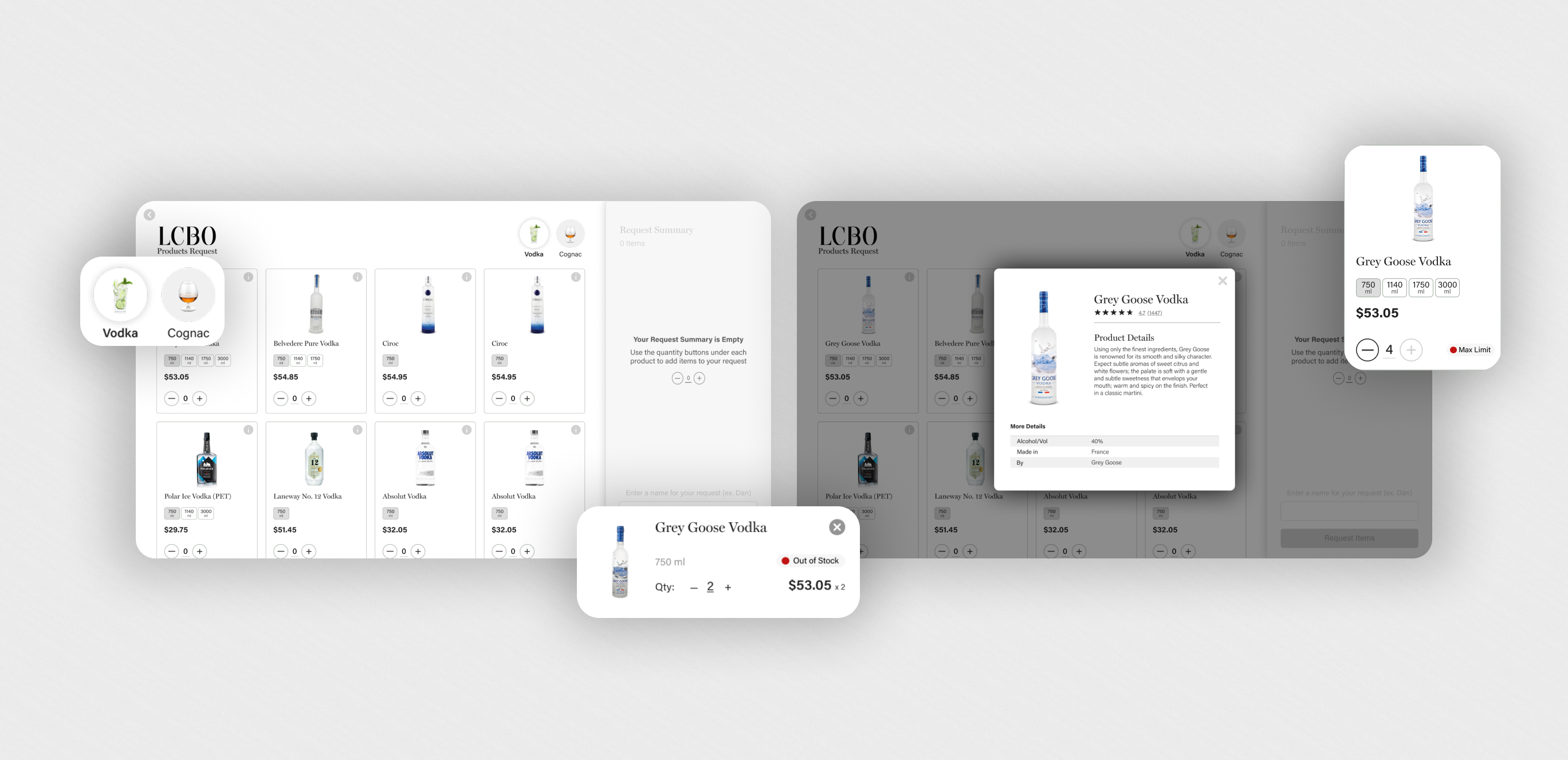
LCBO Internship | Winter 2023
Building LCBO's anti-theft solution to reduce millions in lost revenue each year and decrease theft in stores.

Timeline
Feb - Apr 2023
Team
1 Product Designer
1 Product Manager
2 Developers
2 Managers
My Role
Product Designer
Design Lead
Responsibilities
Product Strategy
UX Research
Interaction Design
Wireframes and Prototyping
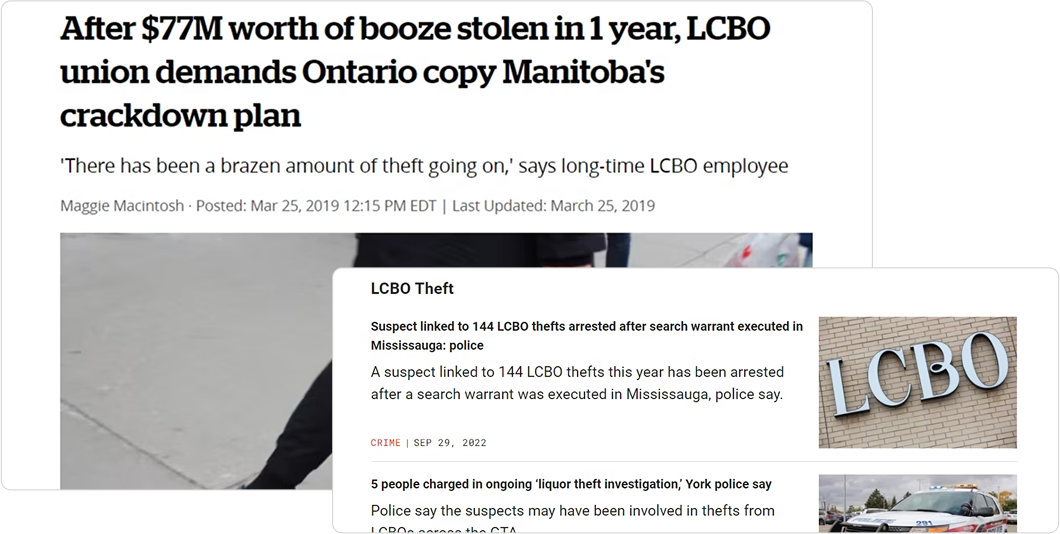
GOALS
SUCCESS METRICS
RESEARCH
The goal was to create a user-friendly interface that would allow customers to easily browse, select, and request products, streamlining the shopping experience while reducing theft opportunities. The goal was to create a user-friendly interface that would allow customers to easily browse, select, and request products, streamlining the shopping experience while reducing theft opportunities.
UNDERSTANDING USERS AND GOALS
DEFINE
GETTING INTO DESIGN
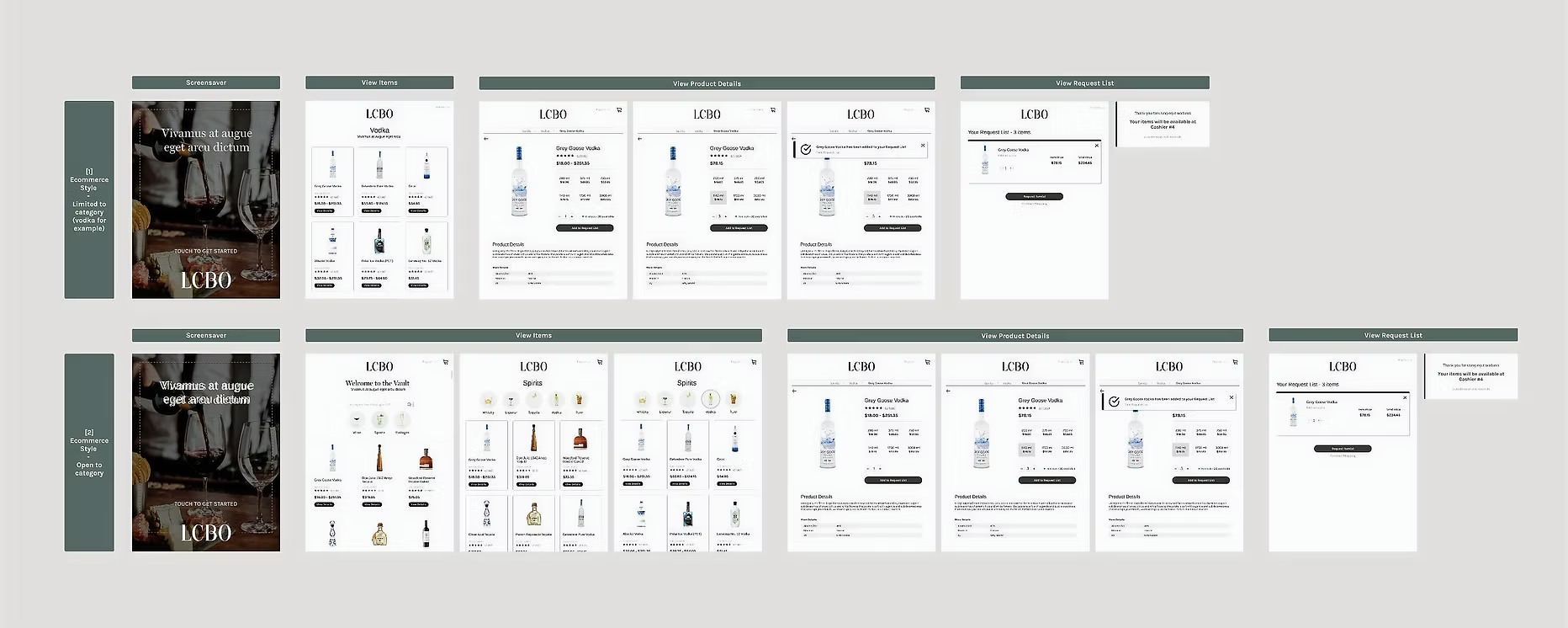
Revisiting Key Decisions
User Journey Map:
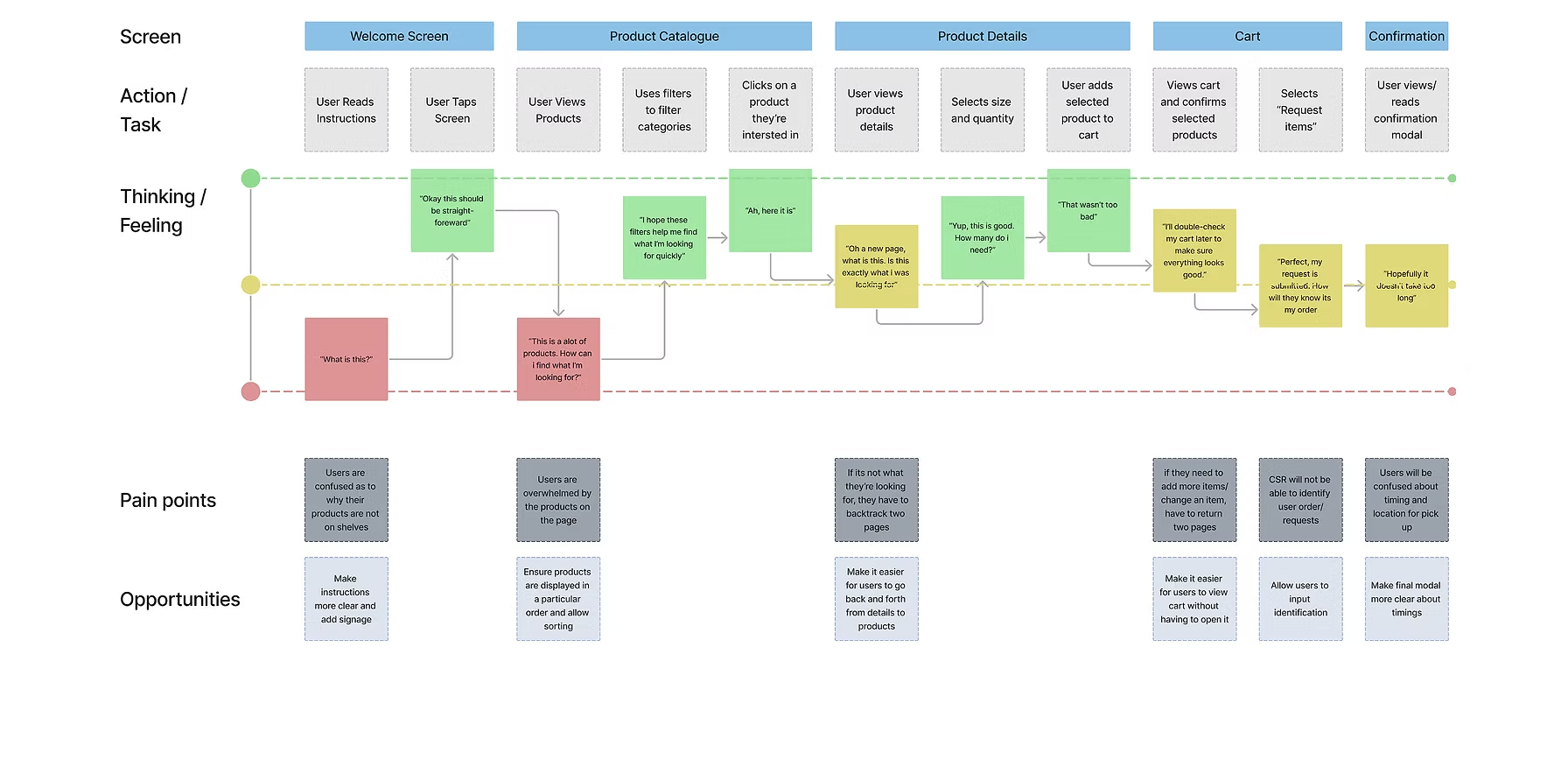
User Flow:

GETTING CLOSE (BUT NOT QUITE)
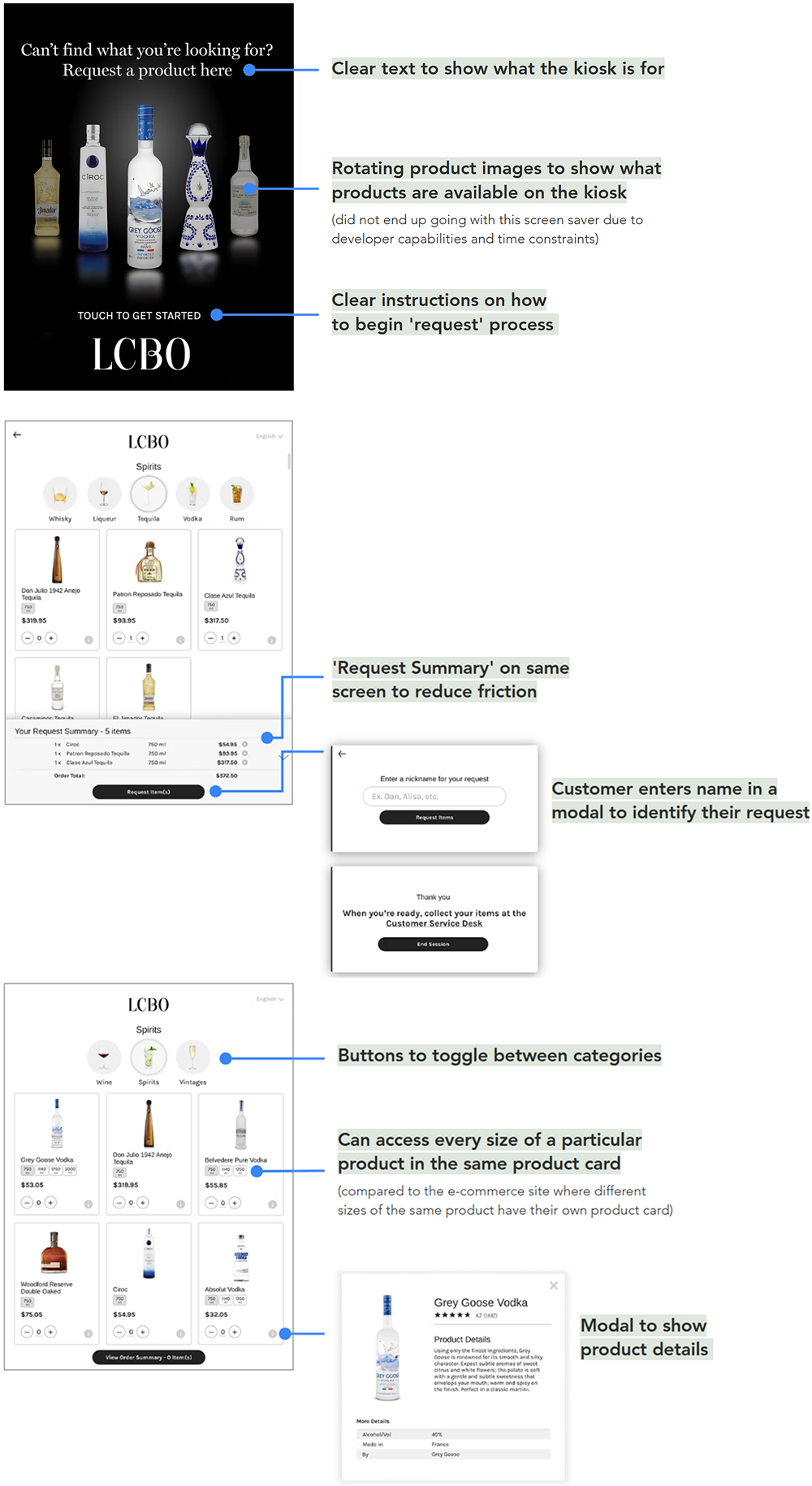
FINAL DESIGNS
Part 2: Screen Breakdown
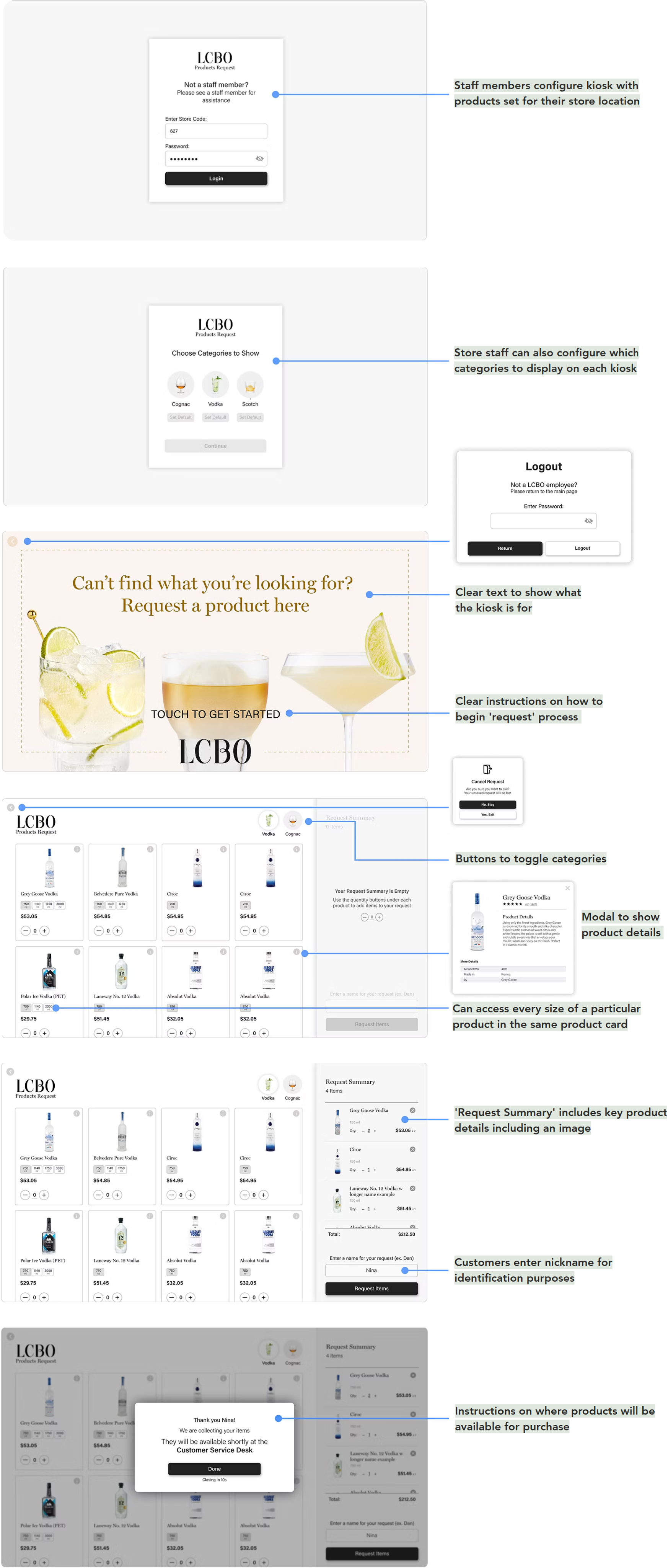
EMPLOYEE SOLUTIONS
Request Management App: Concept Walkthrough
The in-store ordering system included a secondary application for store staff to receive and fulfill customer orders. This application was designed to enable store staff to receive and fulfill customer orders.
While I began designing screens for this app, the development team later took over. I take pride in my initial designs, which inspired the final app. Though they need further refinement, here’s a quick walkthrough of the concept.
⊹ POST INTERNSHIP UPDATE ⊹
KEY LEARNINGS
The Power of Confidence 💪
I learned to balance openness with conviction. By standing behind my ideas while welcoming feedback, I grew into a more confident designer.
Breaking Free from Attachment 🌱
Feedback taught me to let go of personal bias. Staying flexible made my work stronger and my process more objective.
Navigating UX and Technical Collaboration 🚀
Working with developers pushed me to adapt my communication and learn technical basics, building stronger collaboration skills.
The four months at LCBO have been incredibly enriching, thanks to an exceptional team. A special shoutout to my fellow interns—Bhavraj Atwal, Nicholas Lin and Mahfuzur Rahman—and to our managers, Danny Ho and Chris Kelly.
The challenges I faced during this time helped me grow as a product designer and reinforced my passion for solving problems through design. I'm excited to continue this journey!